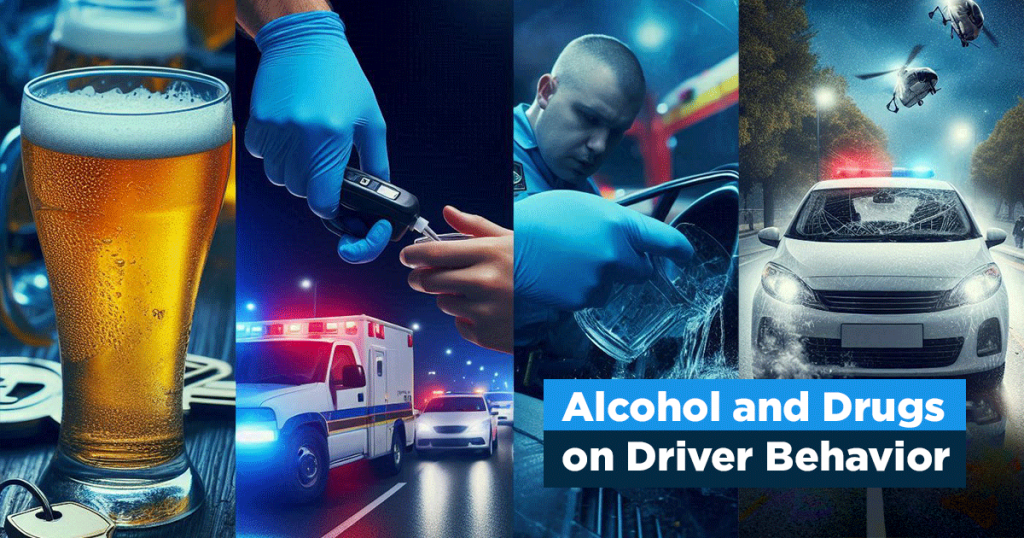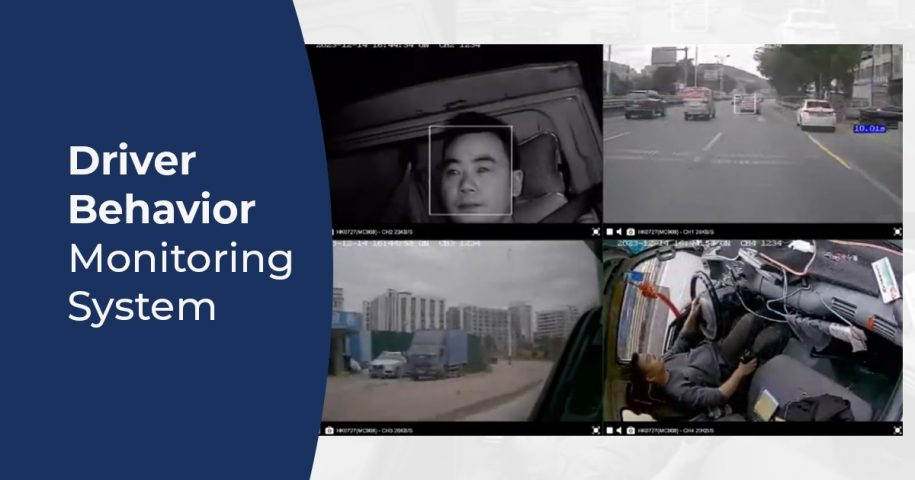The Impact of Driver Behaviour System on Road Safety: Key Factors & Safer Driving Strategies
Welcome to an insightful article that explores the critical topic of driver behavior and its impact on road safety. As we navigate our busy roads, it’s important to understand the factors that contribute to accidents and how we can promote safer driving practices.
Research has shown that driver behavior plays a significant role in road safety. Factors such as speeding, distracted driving, and impaired driving not only endanger the lives of those on the road but also contribute to a higher number of accidents. By diving into these factors and understanding their implications, we can work towards creating a safer environment for everyone.
In this article, we will delve into the various aspects of driver behavior and the impact it has on road safety. From exploring the psychology behind reckless driving to examining the influence of external factors like weather conditions, we will shed light on the complex dynamics that contribute to road accidents.
Ultimately, the goal is to equip readers with a deeper understanding of driver behavior and provide actionable steps to promote safer roads. So, let’s embark on this journey together and pave the way for a more secure and accident-free driving experience.
The role of driver behavior in road accidents
Driver behavior is one of the most crucial factors contributing to road accidents. In fact, studies have shown that up to 90% of road accidents are caused by human error. It is evident that the way drivers behave on the road has a direct impact on road safety.
Reckless driving, such as speeding and aggressive maneuvers, significantly increases the risk of accidents. When drivers exceed the speed limit, they have less time to react to unexpected situations, increasing the chances of collisions. Additionally, aggressive driving behavior, such as tailgating or changing lanes without signaling, can lead to dangerous situations on the road. It’s essential for drivers to understand the consequences of their actions and adopt a responsible approach to driving.
Understanding the factors influencing driver behavior
To address driver behavior effectively, it is crucial to delve into the various factors that influence it. One major factor is distractions, which can divert a driver’s attention from the road. With the rise of smartphones and other electronic devices, distracted driving has become an epidemic. Texting, talking on the phone, or even adjusting the GPS can take a driver’s eyes off the road and significantly increase the risk of accidents. It’s essential for drivers to prioritize their attention and avoid distractions while driving.
Another significant factor influencing driver behavior is alcohol and drugs. Driving under the influence impairs judgment, decreases reaction time, and compromises motor skills. It’s important for drivers to understand the dangers of drinking and driving or using drugs before getting behind the wheel. The consequences of impaired driving can be devastating, not only for the driver but also for innocent lives on the road.
The impact of distractions on driver behavior
Distractions have become a prevalent issue on our roads, with drivers increasingly engaging with technology while driving. The allure of text messages, social media notifications, and phone calls can be hard to resist, but it’s crucial to prioritize safety over distractions.
When drivers are distracted, their focus shifts away from the road, increasing the likelihood of accidents. In fact, studies have shown that texting while driving is equivalent to driving with a blood alcohol concentration of 0.08%, which is legally impaired in many countries. The consequences of distracted driving can be catastrophic, leading to injuries, fatalities, and a significant emotional toll on those involved.
To combat distractions, it’s important for drivers to adopt habits and strategies that minimize their engagement with technology while driving. This can include turning off notifications, using hands-free devices for calls, and pulling over safely if the need arises to use electronic devices. Additionally, educating drivers about the dangers of distractions and promoting responsible driving habits can go a long way in reducing accidents caused by distracted driving.
The influence of alcohol and drugs on driver behavior

Alcohol and drugs impair a driver’s ability to operate a vehicle safely. The effects of alcohol can include slowed reflexes, decreased coordination, and impaired judgment. Similarly, drugs can impair a driver’s ability to concentrate, react quickly, and make sound decisions.
Driving under the influence not only puts the driver at risk but also endangers the lives of other road users. It’s essential for individuals to understand the potential consequences of impaired driving and make responsible choices. Alternatives such as designated drivers, ride-sharing services, or public transportation should always be considered when under the influence.
To tackle this issue, it’s important to promote education and awareness campaigns about the dangers of driving under the influence. Community initiatives, school programs, and public service announcements can help spread awareness and emphasize the importance of responsible decision-making when it comes to alcohol and drug consumption.
The role of fatigue and drowsiness in driver behavior
Fatigue and drowsiness can have severe consequences on driver behavior. Studies have shown that drowsy driving can impair a driver’s ability to react quickly and make sound decisions, similar to the effects of alcohol impairment. Fatigue can also lead to microsleep episodes, where a driver momentarily falls asleep, putting themselves and others at risk.
Long work hours, sleep deprivation, and untreated sleep disorders are common causes of fatigue and drowsiness on the road. It’s crucial for drivers to prioritize their sleep and ensure they are well-rested before embarking on long journeys. Taking regular breaks during extended drives and avoiding driving during times when drowsiness is more likely, such as late at night, can also help prevent accidents caused by fatigue.
Promoting awareness around the dangers of driving while fatigued is essential. Employers can play a role in promoting healthy work-life balance and encouraging employees to prioritize sleep. Additionally, educating drivers about the signs of fatigue and providing resources for managing sleep-related issues can contribute to safer roads.
Promoting safer roads through education and awareness campaigns
Education and awareness play a crucial role in promoting safer roads. By providing drivers with the necessary knowledge and resources, we can empower them to make responsible decisions on the road.
School-based driver education programs are an effective way to instill safe driving habits in young individuals. These programs can cover a wide range of topics, including the rules of the road, defensive driving techniques, and the impact of driver behavior on road safety. By educating young drivers early on, we can lay the foundation for a culture of safe driving.
Community initiatives and awareness campaigns targeted at all drivers can also have a significant impact. These campaigns can emphasize the importance of seat belt usage, the dangers of speeding, and the consequences of distracted or impaired driving. Public service announcements, billboards, and social media campaigns can serve as effective tools to spread awareness and promote responsible driving behavior system.
The importance of enforcing traffic laws to improve driver behavior
Enforcing traffic laws is crucial for improving driver behavior and promoting road safety. Strict enforcement of speed limits, seat belt laws, and laws against distracted or impaired driving can act as deterrents and encourage drivers to abide by the rules of the road.
Law enforcement agencies play a vital role in ensuring compliance with traffic laws. Regular patrols, sobriety checkpoints, and the use of speed cameras can help catch and penalize drivers who engage in dangerous behaviors. By consistently enforcing traffic laws, authorities can create a safer environment on the roads and reduce the number of accidents caused by reckless driving.
Technology solutions to prevent dangerous driver behavior
Advancements in technology have opened up new avenues for preventing dangerous driver behavior. From smartphone applications that block incoming calls and texts while driving to in-car systems that monitor driver behavior, technology can play a significant role in promoting safe driving habits.
Telematics devices, for example, can monitor parameters such as speed, acceleration, and braking patterns. This data can be used to provide feedback to drivers on their driving habits, encouraging them to adopt safer practices. Additionally, some telematics systems can send alerts to drivers or even intervene in critical situations, such as when a driver is exceeding the speed limit.
Other technological solutions include lane departure warning systems, automatic emergency braking, and adaptive cruise control. These features can help prevent accidents by providing drivers with timely warnings and assistive measures.

Conclusion
In conclusion, driver behavior has a significant impact on road safety. Factors such as distractions, alcohol and drug impairment, fatigue, and aggressive driving contribute to a higher number of accidents. By understanding these factors and promoting responsible driving practices, we can work towards creating a safer environment on our roads.
Education and awareness campaigns, strict enforcement of traffic laws, and the implementation of technology solutions all play a vital role in improving driver behavior. It is essential for individuals, communities, and governments to work together to prioritize road safety and reduce the number of accidents caused by reckless driving.
Let’s remember that every action we take on the road has consequences. By adopting responsible driving habits, we can pave the way for a more secure and accident-free driving experience for everyone. Together, let’s make safer roads a reality.
Pictor Telematics: Leading the Way in GPS Tracking and Telematics Solutions

Leave a Reply